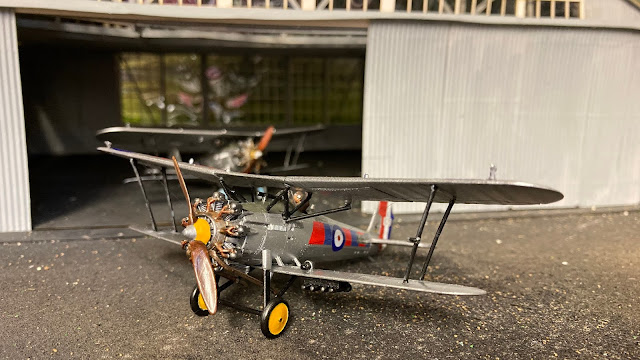Douglas Bader joined the RAF as an officer cadet in 1928 as one of six annual prize cadetships offered by the Royal Air Force College Cranwell. On 26 July 1930, Bader was commissioned as a pilot officer into No. 23 Squadron RAF based at Kenley, Surrey, flying Gloster Gamecocks.
In 1931, a couple of months after his twenty-first birthday, Bader was selected to fly in 23 Squadron’s aerobatic display team. At the same time, the Squadron began to replace its Gamecocks with a new fighter, the Bristol Bulldog IIA. Powered by a 490-hp Bristol Jupiter VII engine, the Bulldog was much faster than the Gamecock — it could do nearly 180 mph flat out — but it was also a good deal heavier, which gave it a tendency to lose height during certain aerobatic manoeuvres such as slow rolls.
After a poor game in front of the England Rugby selectors at the weekend, Bader was feeling mildly depressed on the morning of Monday, 14 December, when he went down to ‘C’ Flight to see what his orders would be for the day. 23 Squadron had been picked to appear at Hendon Air Display three years running and it would be a tremendous achievement appear a fourth time, so Douglas threw the Bulldog around the sky for an hour and a half, ridding himself of some of the weekend’s anxiety, but not all. He had hoped then that lunch with two fellow pilots at Woodley Aero Club, near Reading, would have improved this but when some of the keen young members of the Club asked the three RAF pilots if they would put on a show for them, Douglas was goaded into agreeing and the three Bulldogs took to the air.
While the other two continued their climb, Douglas pulled up in a steep turn to head back towards the aerodrome, dropping the aircraft lower and lower until it was only feet above the grass. The Bulldog’s entry speed for a roll was 120 mph — safe enough at altitude, but leaving very, very little margin for error low down. Bader aimed for a spot just in front of the clubhouse and began his manoeuvre, pushing the stick smoothly over to the right to start his roll; once well past the vertical, his port wingtip coming down to point towards the ground, he applied rudder to maintain the height, vital now, for his speed was slipping. Unable to create the required lift, the heavy Bulldog sideslipped the last few feet into the ground.
Bader’s right leg was damaged beyond repair; requiring it to be amputated just above the knee. The surgeon hoped to save his left leg but that too, having been badly crushed, had to be removed from below the knee. Such horrific injuries one would not have gleaned from his logbook, where, after the crash Bader made the following entry :
Crashed slow-rolling near ground. Bad show.
After a lengthy period of recovery and being fitted with prosthetic legs, Bader underwent tests at the Central Flying School, believing it a formality to retuning to active service. The RAF hierarchy, however, decreed that, although he passed the flying and medical checks, an officer could not fly without legs, there being nothing in King’s Regulations to cover such a case. In April 1933 Bader was invalided out of the service prematurely ending his RAF career .. or did it?
The Model
For Badar's Bulldog, I used both Airfix's original 1960s kit and their Vintage Classics rerelease. My first attempt at the original ended in disaster when I glued the upper wing together totally wrong. I had intended to buy the new kit to just use its upper wing, but after breaking the old wing into 3 and rejoining the pieces in the correct sequence it didn't look too bad. So I built both!
For Bader's aircraft decals I used a set from Model Alliance, which despite the cover art did not include the roundels nor the full tail stripes! The 1960s decals were well past their use by dates so I made use of the rereleased set's national markings and decided on painting the now extra kit in the colours of the RAF College which, in the Model Alliance drawings, did not have tail markings.
I also has a go at rigging Bader's aircraft, but the Ammo Mig rigging kit was so awful to use and difficult to see I'd even done anything, that I only managed 2 wires.
Overall, I'm very happy with the end result(s), they were great fun little kits to build.









No comments:
Post a Comment
Note: only a member of this blog may post a comment.